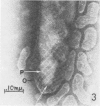Abstract
The microscopic examination of colonic scrapings from 12 of 18 normal dogs revealed the presence of a spirochete. From two such dogs a spirochete was isolated and successfully cultured. Although similar in outward appearance to the porcine spirochete of swine dysentery the canine spirochete possessed ultrastructural properties which distinguished it from the porcine agent. This canine agent is thought to constitute a separate species and should not be confused with the agent associated with swine dysentery.
Full text
PDF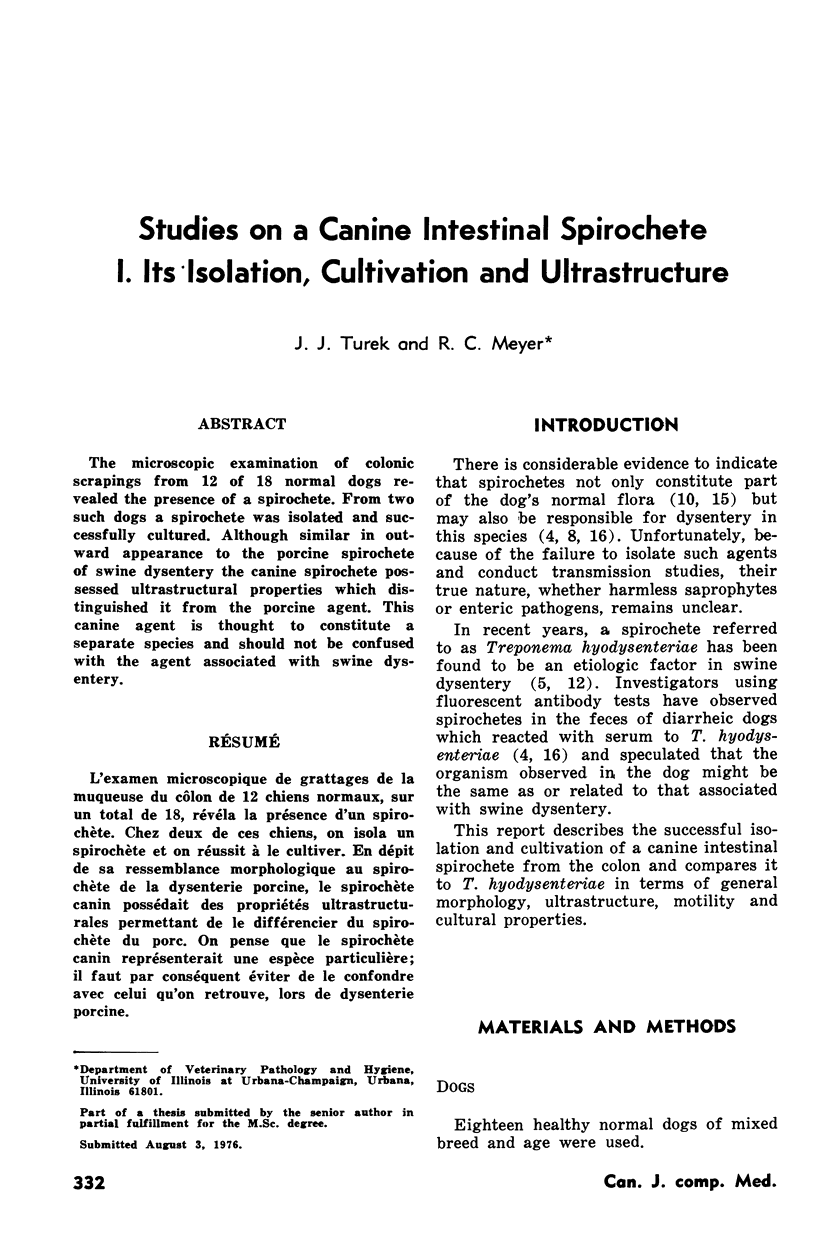
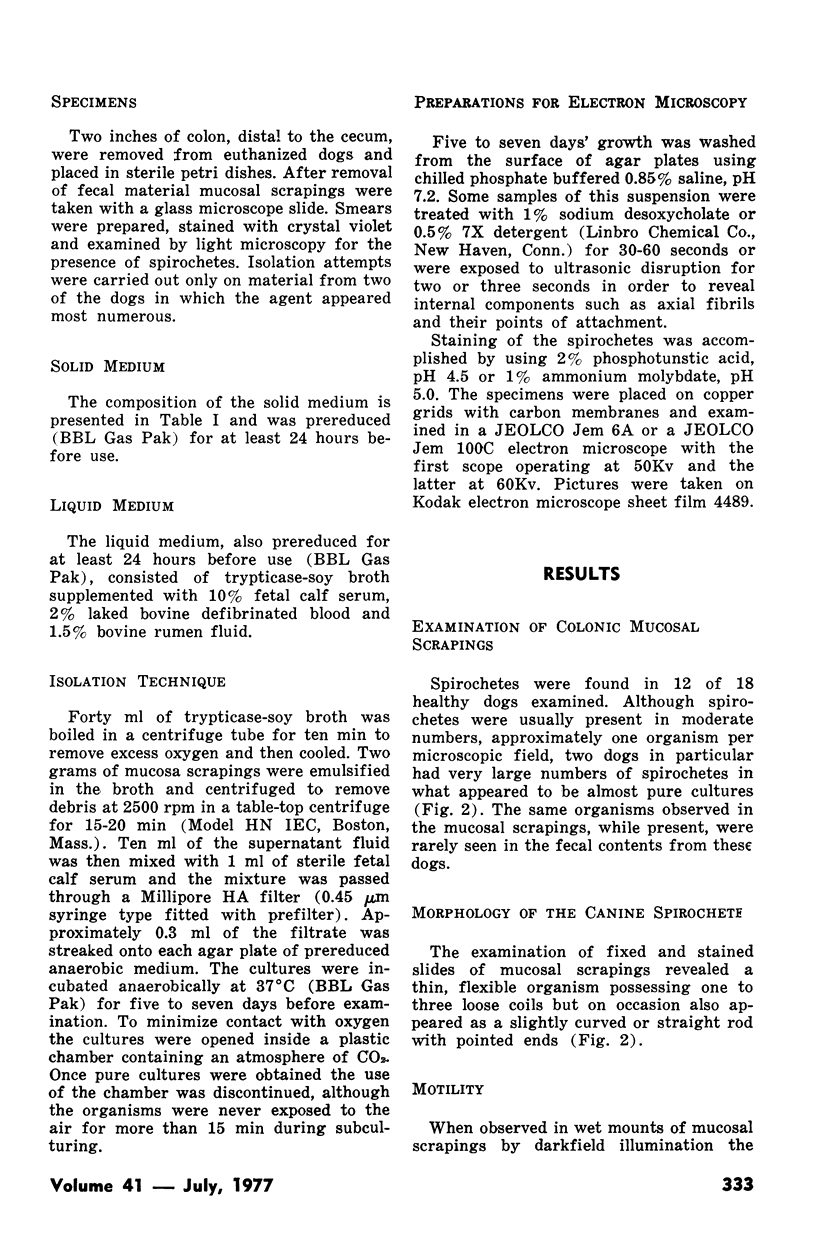
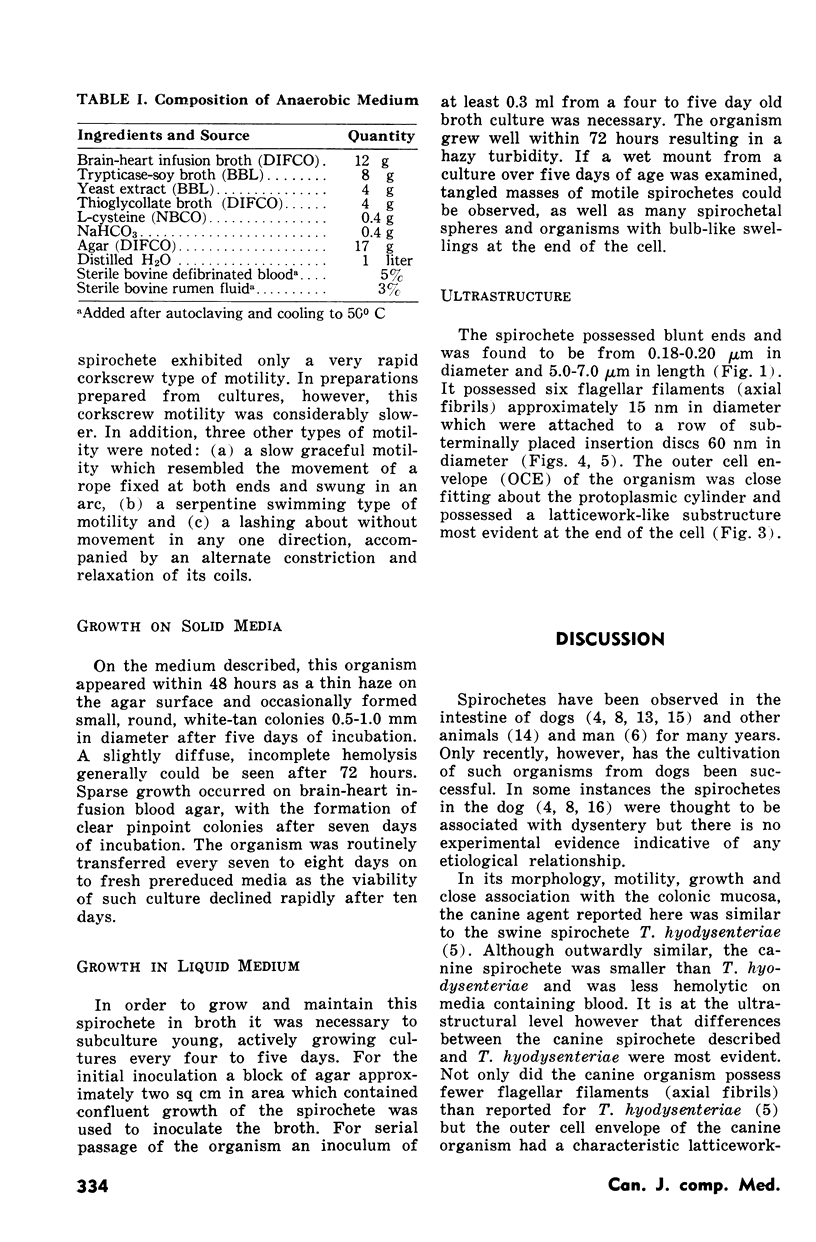
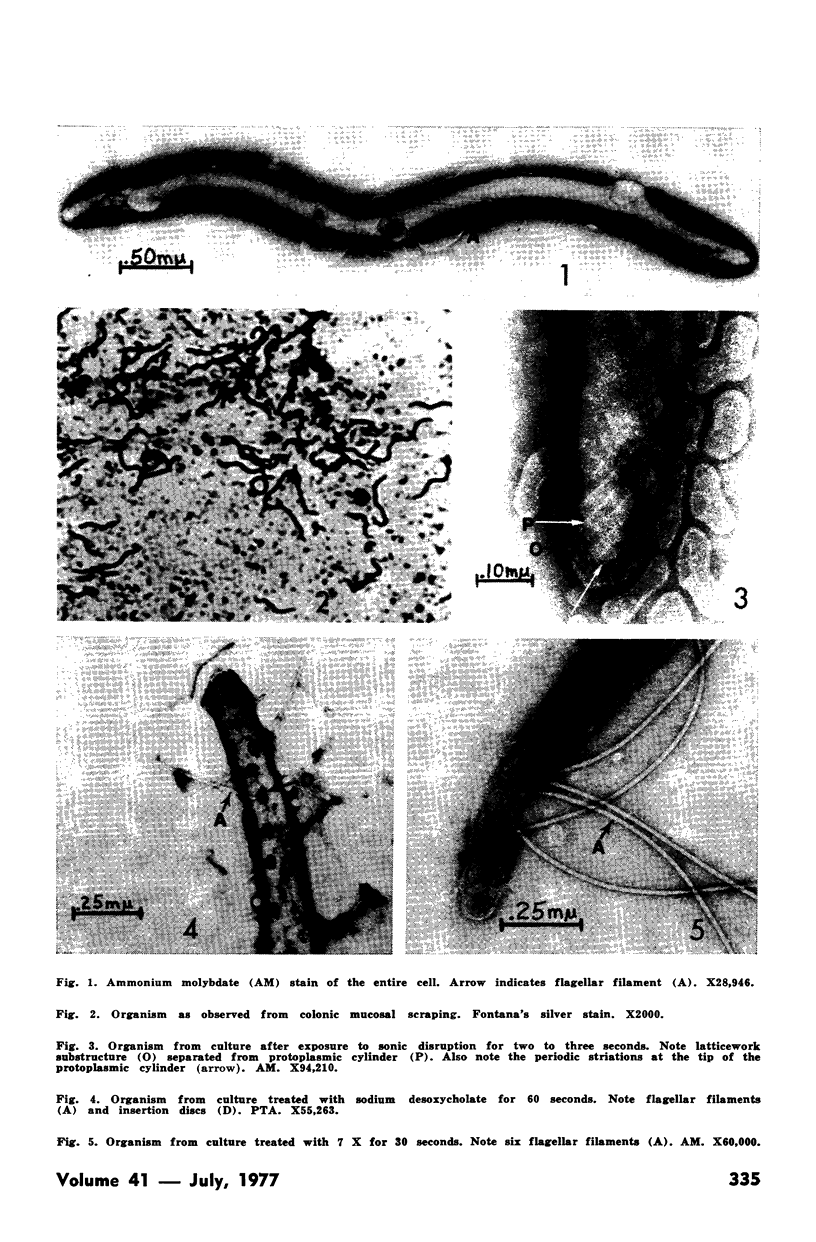
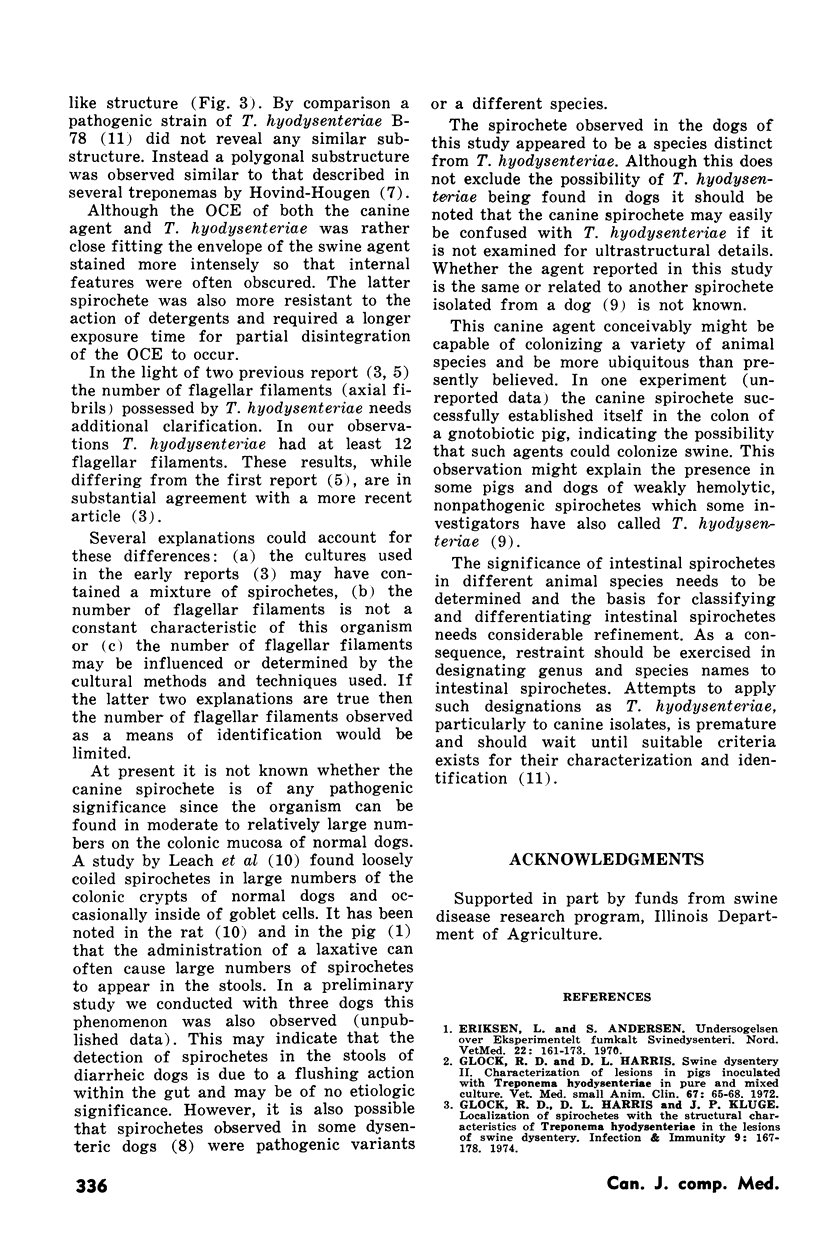
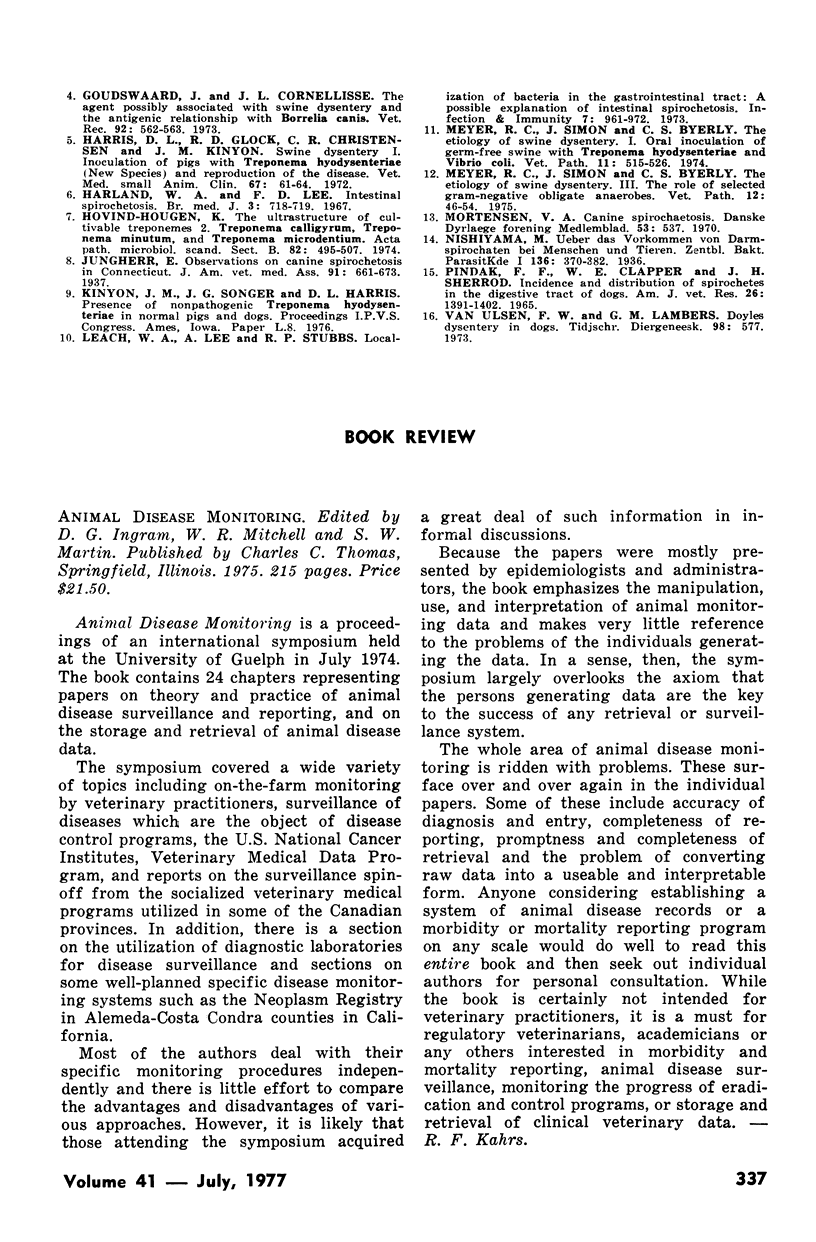
Images in this article
Selected References
These references are in PubMed. This may not be the complete list of references from this article.
- Glock R. D., Harris D. L., Kluge J. P. Localization of spirochetes with the structural characteristics of Treponema hyodysenteriae in the lesions of swine dysentery. Infect Immun. 1974 Jan;9(1):167–178. doi: 10.1128/iai.9.1.167-178.1974. [DOI] [PMC free article] [PubMed] [Google Scholar]
- Glock R. D., Harris D. L. Swine dysentery. II. Characterization of lesions in pigs inoculated with Treponema hyodysenteriae in pure and mixed culture. Vet Med Small Anim Clin. 1972 Jan;67(1):65–68. [PubMed] [Google Scholar]
- Goudswaard J., Cornelisse J. L. The agent possibly associated with swine dysentery and the antigenic relationship with Borrelia canis. Vet Rec. 1973 May 26;92(21):562–563. doi: 10.1136/vr.92.21.562. [DOI] [PubMed] [Google Scholar]
- Harland W. A., Lee F. D. Intestinal spirochaetosis. Br Med J. 1967 Sep 16;3(5567):718–719. doi: 10.1136/bmj.3.5567.718. [DOI] [PMC free article] [PubMed] [Google Scholar]
- Harris D. L., Glock R. D., Christensen C. R., Kinyon J. M. Inoculation of pigs with Treponema hyodysenteriae (new species) and reproduction f the disease. Vet Med Small Anim Clin. 1972 Jan;67(1):61–64. [PubMed] [Google Scholar]
- Hougen K. H. The ultrastructure of cultivable treponemes. 2. Treponema calligyrum, Treponema minutum and Treponema microdentium. Acta Pathol Microbiol Scand B Microbiol Immunol. 1974 Aug;82(4):495–507. [PubMed] [Google Scholar]
- Leach W. D., Lee A., Stubbs R. P. Localization of bacteria in the gastrointestinal tract: a possible explanation of intestinal spirochaetosis. Infect Immun. 1973 Jun;7(6):961–972. doi: 10.1128/iai.7.6.961-972.1973. [DOI] [PMC free article] [PubMed] [Google Scholar]
- Meyer R. C., Simon J., Byerly C. S. The etiology of swine dysentery. I. Oral inoculation of germ-free swine with Treponema hyodysenteriae and Vibrio coli. Vet Pathol. 1974;11(6):515–526. doi: 10.1177/030098587401100606. [DOI] [PubMed] [Google Scholar]
- Meyer R. C., Simon J., Byerly C. S. The etiology of swine dysentery. III. The role of selected gram-negative obligate anaerobes. Vet Pathol. 1975;12(1):46–54. doi: 10.1177/030098587501200107. [DOI] [PubMed] [Google Scholar]
- Pindak F. F., Clapper W. E., Sherrod J. H. Incidence and distribution of spirochetes in the digestive tract of dogs. Am J Vet Res. 1965 Nov;26(115):1391–1402. [PubMed] [Google Scholar]
- van Ulsen F. W., Lambers G. M. Dysenterie Doyle (?) bij de hond. Tijdschr Diergeneeskd. 1973 Jun 15;98(12):577–579. [PubMed] [Google Scholar]





